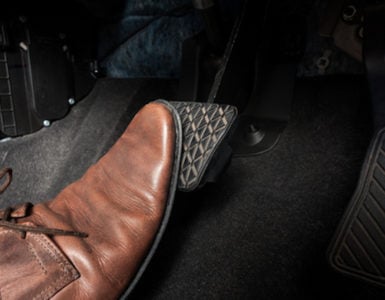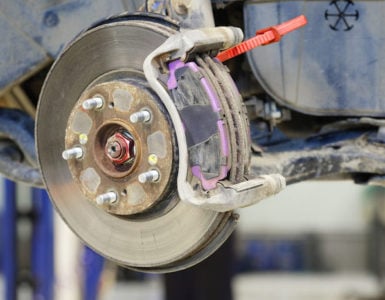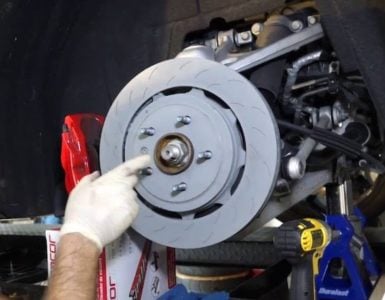Brake pads are an essential component to the operation of your vehicle. When they wear out unevenly on either side, it generally points to a bigger problem with the braking system. This post will discuss brake pad wear and what to do if they are wearing out unevenly.
Wear Sensors

Brake wear sensors are electronic sensors that tell you when it’s time to change your brake pads. This handy electronic tool was pioneered in high-end German vehicles. It can help you identify if your brakes are wearing unevenly. Before electronic wear sensors, there were mechanical wear indicators. These were made from a springy piece of metal attached to the brake pad. As the pad wore down to a certain point, the springy metal piece would start dragging on the rotor and make noise. These worked well until cars began to be more soundproofed, and then it became difficult to hear them. Read more about wear sensors here.
Are Brakes Supposed To Wear Evenly?
Brake pads are intended to wear out evenly on each side of the same axle. Brake systems are designed so equal brake pressure is applied to each side of the vehicle. If everything is working correctly, the brake pads will wear out evenly. If your brake pads start to wear out unevenly, it usually points to another problem in the braking system.
What Causes Brakes To Wear Unevenly?
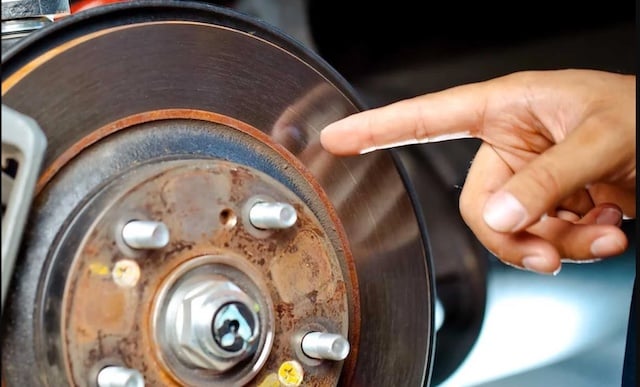
When brake systems are relatively new, they are pretty trouble-free. As brake systems age, several potential mechanical causes of uneven brake pad wear show up.
- Caliper Failure: Brake calipers sometimes begin leaking brake fluid when they age. Once a caliper begins leaking, it will have less braking force. The pads on the other side of the axle have to do more work, so they will wear down sooner.
- Slide Pins (aka Guide Pins): Slide pins are metal pins that allow the brake caliper to move side to side when braking. If they become corroded, then the caliper can’t move as intended. If both pins get corroded, the caliper can’t return to its non-braking position. This will cause the pad on one side of the rotor to wear more quickly than the other. If only one pin sticks, it can cause the pad to wear at a slant.
- Sticky Caliper Pistons: Corrosion can occur on the caliper pistons over time. This causes the piston to stick and not retract fully, so the brake pads drag.
- Poorly Installed Brake Pads: When you get new brake pads, it’s possible that they were poorly installed. If the tech got any brake grease on the surface of the pad, the car would pull to the opposite side when stopping. If this happens, you would notice a difference in your vehicle’s braking performance after getting your brakes changed.
Can You Replace Brake Pads On Only One Side?
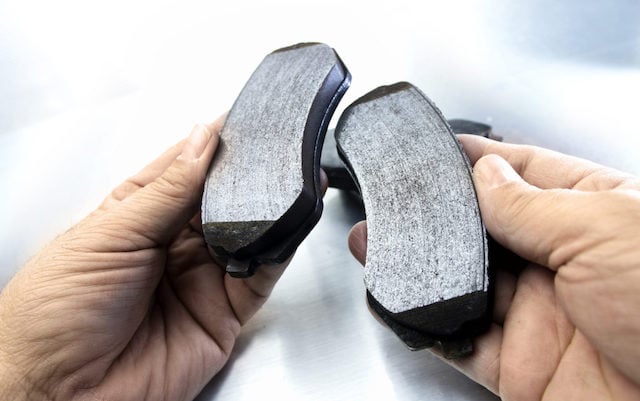
It is not recommended to change brake components on only one side of an axle. Doing this will cause braking forces to be uneven from side to side, resulting in the vehicle pulling when braking. You can replace the pads or rotors on only one axle. For example, you can replace the front pads, but not the rear.
Buy Brakes has been in business for over 20 years and is proudly Veteran owned. We have 8 warehouse locations across the US for fast shipping times and offer free shipping on orders over $99. Have a question? Call us at 888-257-7149 or text us at 702-903-1713.

